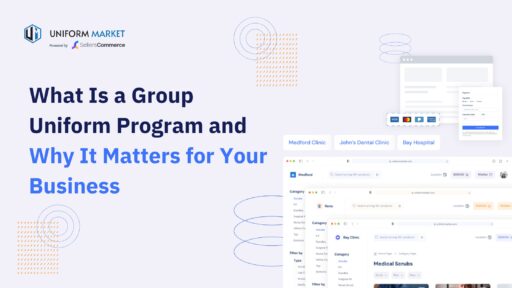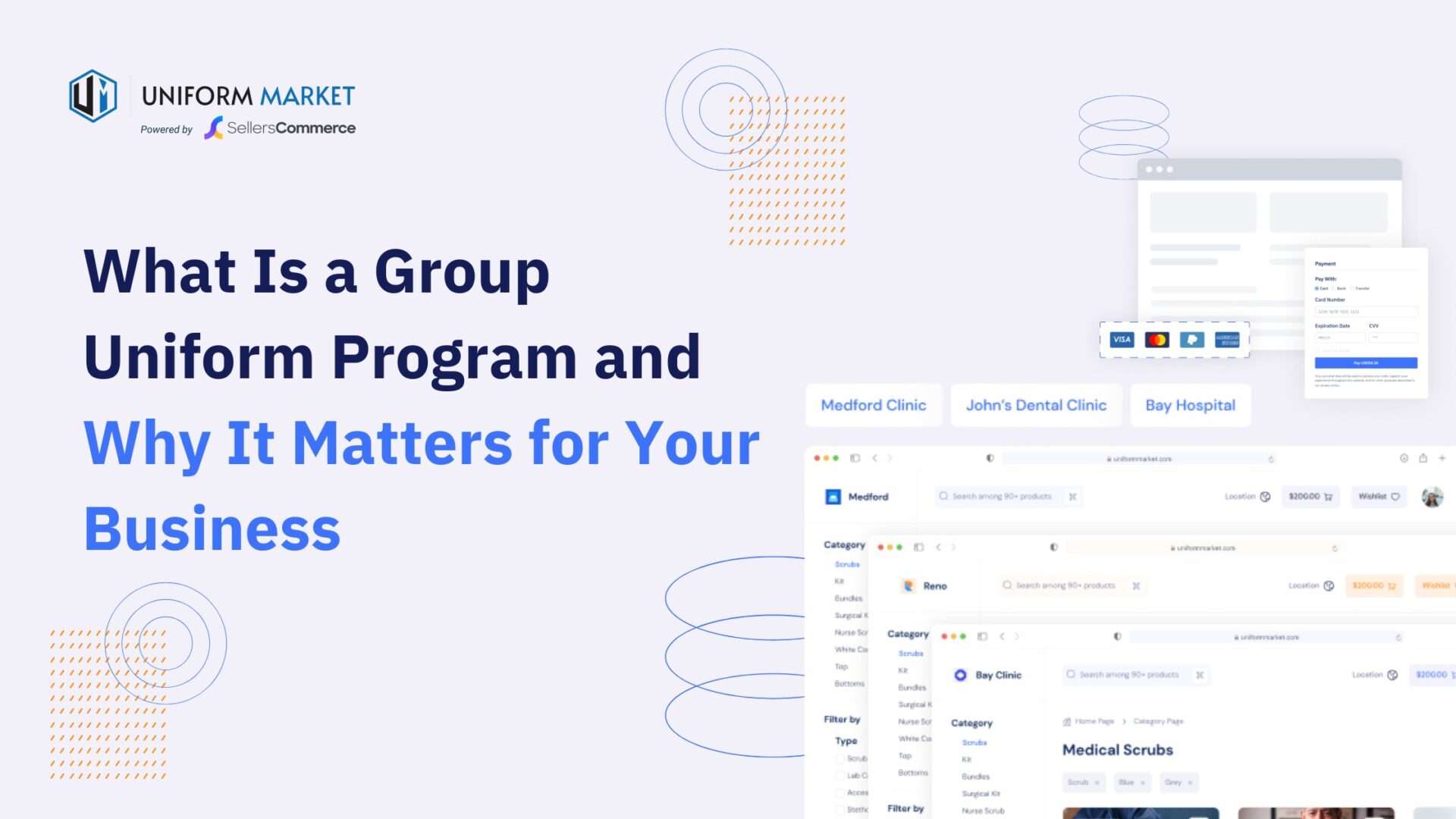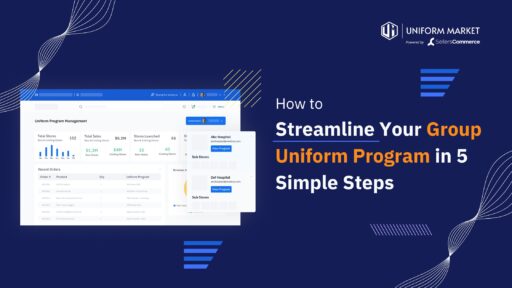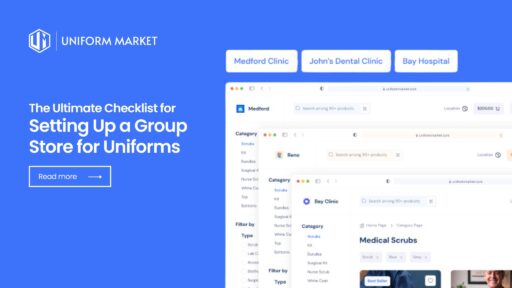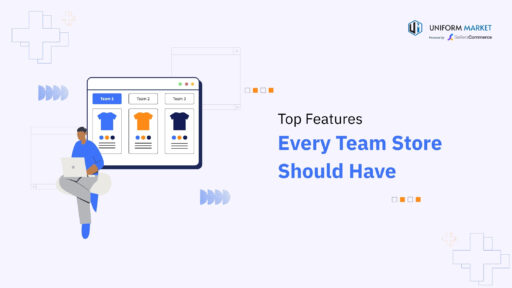Consider McDonald’s iconic uniforms; they’re more than just attire. A Group Uniform Program is a strategic approach to standardizing employee clothing, which can significantly impact an organization’s brand identity. You might wonder why this matters. Well, having a consistent look fosters team unity and makes a lasting impression on customers. But there’s more to it than just appearances. How does a coordinated uniform program improve operational efficiency or enhance customer perception? Understanding these benefits could transform how an organization view employee attire in their business strategy.
The Importance of Group Uniform Programs
Uniform programs play a pivotal role in shaping an organization’s identity and operational dynamics. In the healthcare, corporate, retail, and industrial sectors, these programs are integral to business’s branding strategies. They ensure brand consistency, which is crucial for market differentiation. By providing a unified appearance, they not only convey professionalism but also embed a lasting impression in the minds of their clients and customers.
Moreover, uniform programs contribute significantly to employee retention. When employees wear uniforms, they feel part of a cohesive team, boosting morale and engagement. This sense of belonging can reduce turnover rates, providing a stable workforce for the growth of an organization.
Supplier partnerships are another critical aspect. Collaborating with reliable uniform suppliers ensures quality and consistency, enhancing brand’s reputation. These partnerships can also facilitate cost management by negotiating bulk purchases and long-term agreements, ultimately reducing expenses.
Furthermore, operational efficiency sees improvement as uniforms streamline workplace attire, eliminating the daily decision-making process of what to wear. This allows employees to focus on tasks that add value to business.
Embracing a group uniform program is a strategic move that aligns with broader business objectives.
What Is a Group Uniform Program?
A group uniform program is a structured approach that standardizes employee attire to enhance brand identity and ensure professional appearance across organization.
You’ll find these programs widely used in industries such as hospitality, healthcare, and corporate sectors where consistent presentation is crucial.
Key elements include selecting appropriate attire, managing inventory, and implementing policies for maintenance and compliance.
Definition and Purpose
Implementing a group uniform program is a strategic decision that can enhance the company’s brand consistency and professionalism. At its core, a group uniform program establishes a set of uniform standards that employees adhere to, fostering group cohesion and reinforcing employee identity. This alignment not only strengthens internal unity but also positively impacts customer perception. When the team presents a unified appearance, it serves as a powerful form of brand representation. Customers are more likely to associate this consistency with reliability and quality, which can significantly influence their loyalty and trust.
A well-structured uniform program isn’t merely about aesthetics; it’s a tool for ensuring that every employee embodies company’s values and mission. The uniform becomes a tangible connection between staff and the brand, acting as a silent ambassador that communicates professionalism and attention to detail.
| Benefit | Impact on Business |
| Group Cohesion | Enhances teamwork and collaboration |
| Employee Identity | Fosters pride and belonging |
| Customer Perception | Boosts consumer trust and satisfaction |
| Brand Representation | Strengthens market presence |
Ultimately, a group uniform program is about creating a seamless and professional interaction between the company, employees, and customers, driving business success through a unified visual identity.
Common Industries That Use Group Uniform Programs
As you consider the impact a group uniform program can have on the business, it’s important to recognize the industries where such programs are most prevalent.
In healthcare, uniforms are essential for fostering professionalism and ensuring hygiene. Healthcare uniforms help patients quickly identify staff, creating a sense of trust and safety.
Retail environments benefit from retail attire that aligns with corporate branding, enhancing customer service by making employees easily identifiable and reinforcing the company’s image.
The hospitality industry relies heavily on hospitality dress to maintain a polished and cohesive appearance. Uniforms in this sector contribute to the guest experience by ensuring staff members are instantly recognizable and embody the brand’s values.
In corporate offices, uniforms can streamline corporate branding, creating a unified look that aligns with the company’s ethos and promotes a professional environment.
Educational institutions also use educational apparel to instill a sense of community and equality among students and staff. Uniforms in schools can reduce distractions and focus students on learning rather than attire.
Public safety sectors, though not listed here, also use uniforms to signify authority and ensure public trust.
Each of these industries demonstrates the diverse applications and benefits of group uniform programs.
Core Elements of a Group Uniform Program
Establishing an effective group uniform program involves several key components that ensure both functionality and employee satisfaction.
Firstly, consider sustainability initiatives to align theuniform program with eco-friendly practices. This can enhance the brand’s reputation and appeal to environmentally-conscious employees.
Next, focus on employee branding by customizing uniforms to reflect the company’s identity. This promotes a cohesive image and boosts morale.
Efficient inventory management is crucial for maintaining an organized and responsive uniform program. Implement systems that allow for seamless tracking of inventory levels, ensuring employees always have access to the necessary attire.
Incorporating an employee self-service portal can streamline this process, enabling staff to order uniforms directly and reduce administrative burdens.
Cost analysis is another vital element. Evaluate the program’s expenses to identify areas for potential savings, such as bulk uniform orders.
Establishing strong vendor partnerships ensures you receive competitive pricing and quality service. Collaborate with vendors who understand the business’s unique needs and can deliver on customization options.
To summarize, focus on these core elements:
- Sustainability initiatives
- Employee branding
- Inventory management
- Cost analysis and vendor partnerships
How Group Uniform Programs Work?
Implementing a group uniform program involves utilizing managed online portals that streamline the ordering process.
You’ll have to be prepared with pre-approved product catalogs and budget controls, ensuring consistency and cost-efficiency.
Additionally, employee self-service portals facilitate reorder management, allowing employees to efficiently maintain their uniform needs.
Managed Online Portals for Ordering Uniforms
A managed online portal streamlines the process of ordering and tracking uniforms, making it an essential tool for businesses looking to enhance efficiency in their group uniform programs.
By integrating managed inventory systems, you can ensure that stock levels are always optimal, reducing the risk of overstocking or stockouts. Establishing robust supplier partnerships is crucial as they directly influence order fulfillment speed and accuracy.
A well-thought-out user experience design is vital, allowing employees to navigate the portal effortlessly, minimizing the time spent on placing orders.
Payment integration solutions offer seamless transaction processes, catering to various payment methods like allowances, payroll deducts, points and ensuring financial accuracy.
Logistics coordination strategies are implemented to guarantee timely deliveries, aligning with the business’s priorities and operational schedules.
Here’s what you’ll gain from using a managed online portal:
- Efficiency: Streamlines ordering and tracking processes, saving time and resources.
- Accuracy: Reduces errors in ordering, ensuring that employees receive the correct uniforms.
- Control: Allows monitoring of inventory levels and order statuses in real-time.
- Convenience: Provides an intuitive interface for users, simplifying the entire process.
Pre-Approved Product Catalogs and Budget Controls
When businesses adopt pre-approved product catalogs and budget controls, they simplify the procurement process and enhance operational efficiency in group uniform programs. By working with pre-approved vendors, you ensure that the products meet specific quality standards and compliance requirements, eliminating the guesswork from the procurement process.
This approach streamlines operations, as it allows you to quickly access a curated selection of uniforms that align with the company’s branding, compliance and safety protocols.
Budget allocation becomes more transparent and manageable with predefined spending limits, helping you maintain fiscal discipline. By setting clear budget controls, you can prevent overspending and ensure that resources are allocated efficiently across different departments or teams.
This framework not only supports fiscal responsibility but also provides a systematic approach to track expenses and monitor compliance with financial goals.
Product standardization is another crucial benefit of using pre-approved catalogs. It ensures consistency across the workforce, reinforcing brand identity and maintaining a professional appearance.
Moreover, compliance tracking becomes more straightforward, as all purchases are documented and aligned with company policies. This meticulous approach fosters procurement efficiency and enhances overall operational effectiveness, making it a strategic asset for the business.
Employee Self-Service Portals and Reorder Management
Streamlining uniform procurement through pre-approved catalogs sets the stage for efficient employee interaction with the ordering process via self-service portals.
These employee apparel program portals empower employees to manage their uniform needs independently, reducing administrative overhead and fostering a seamless user experience. Employee training ensures staff can navigate these systems effectively, enhancing the overall efficiency of the program.
With self-service portals, you can implement on-demand orders and set up automated reminders for reorders, enhancing inventory management. This proactive approach helps maintain optimal stock levels and minimizes disruptions.
Furthermore, integrating cost analysis tools enables detailed tracking of expenses, allowing you to make informed decisions that align with the organization’s budgetary constraints.
Building robust supplier relationships is crucial for the success of any uniform program. By having access to real-time order data, businesses can anticipate demand and deliver timely shipments, strengthening these partnerships with effective and informed co-ordination
Consider the following benefits of implementing self-service portals:
- Streamlined Reordering: Automated reminders prevent stockouts and ensure continuous supply.
- Enhanced User Experience: Employees enjoy a straightforward, efficient ordering process.
- Improved Inventory Management: On-demand orders keep inventory balanced and reduce excess.
- Cost Control: Detailed cost analysis aids in maintaining budget discipline.
Adopting these practices will maximize the effectiveness of the group uniform program.
Why Group Uniform Programs Matter for Businesses
Implementing a group uniform program is critical for maintaining brand identity and ensuring consistency across business operations.
You’ll find that it not only boosts employee morale and engagement but also streamlines procurement processes, enhancing operational efficiency.
Moreover, it helps the organization comply with industry and safety standards, safeguarding both employees and business reputation.
Brand Identity and Consistency
A well-designed group uniform program can be a powerful tool in shaping the business’s brand identity and ensuring consistency across all customer interactions.
By leveraging effective brand recognition strategies, you create a cohesive visual identity that aligns with uniform design trends and enhances employee branding initiatives. This approach strengthens the brand’s presence and makes a lasting impression on customers.
Consider the following benefits of a consistent uniform program:
- Visual Identity Alignment: Uniforms that reflect thebrand’s colors, logo, and values help maintain a unified appearance that resonates with customers and reinforces therrand’s message.
- Customer Perception Impact: A professional, standardized appearance builds trust and credibility, positively influencing how customers perceive the business.
- Employee Branding Initiatives: Uniforms serve as an extension of thebrand, allowing employees to embody the business’s ethos and reinforcing a sense of belonging and pride.
- Adaptability to Uniform Design Trends: Staying updated with current trends enhances the brand’s modernity and relevance, ensuring that uniforms remain appealing and effective in the marketplace.
Implementing a group uniform program not only supports brand identity and consistency but also positions the business as professional and trustworthy, directly contributing to long-term success.
Employee Morale and Engagement
When employees wear high-quality, thoughtfully designed uniforms, they often experience a boost in morale and engagement. This isn’t just about looking good—it’s about feeling part of a cohesive team and workplace culture. By fostering team cohesion, uniforms can enhance how employees perceive their roles and contributions to the organization.
When you invest in a professional appearance, you signal the employees that you value their work and want them to represent the company with pride.
Employee satisfaction is closely tied to feeling appreciated and part of something larger. Uniforms can play a significant role in achieving this, as they eliminate daily decision fatigue regarding attire and ensure everyone starts the day on equal footing.
This can lead to a productivity boost, as employees focus more on their tasks and less on worrying about their wardrobe.
Moreover, a consistent dress code can strengthen workplace culture by emphasizing unity and shared goals. It reduces social barriers, fosters inclusivity, and aligns individual efforts with organizational objectives.
In essence, a well-implemented group uniform program can be a powerful tool for enhancing employee engagement and satisfaction, ultimately driving the business forward.
Operational Efficiency and Procurement Simplification
Uniform programs not only boost employee morale but also significantly enhance operational efficiency. By adopting a group uniform program, you can streamline workflows and reduce administrative burdens through automated processes. This approach simplifies procurement, ensuring the business operations run smoothly and efficiently.
Here’s how:
- Streamlined Workflows: Uniform programs allow you to automate orders and inventory management, freeing up time for the team to focus on core activities.
- Cost Reduction: Bulk purchasing and standardized designs minimize costs. By consolidating orders, you leverage economies of scale and reduce expenditure on uniforms.
- Supplier Relationships: Building strong relationships with uniform suppliers ensures consistent quality and timely delivery, which are crucial for maintaining operational flow.
- Technology Integration: Implementing technology solutions for uniform management can provide real-time data and analytics, facilitating informed decision-making.
Additionally, employee training on new systems should be prioritized to maximize these benefits.
Investing in a group uniform program not only simplifies procurement but also optimizes the resources. By focusing on these critical areas, you can achieve greater operational efficiencies.
This strategic approach lets you maintain a competitive edge and drives business growth, ensuring operations are as efficient and cost-effective as possible.
Compliance with Industry and Safety Standards
Compliance with industry and safety standards is crucial for businesses operating in sectors like healthcare and industrial work, where regulatory adherence is non-negotiable. A group uniform program ensures that uniforms meet these stringent regulations, reducing the risk of non-compliance. Staying updated with regulatory updates is essential, as these can impact uniform requirements. A well-managed program aids in adapting to changes efficiently, ensuring the team is equipped with the right attire for their roles.
Safety training is another critical element. Uniforms designed to meet industry certifications enhance safety, providing necessary protection and minimizing workplace hazards. By aligning uniform program with compliance audits, you can systematically verify that uniforms adhere to industry standards, thus supporting liability management efforts. This proactive approach not only safeguards employees but also protects businesses from potential legal issues.
Incorporating a group uniform program helps streamline these processes, ensuring that every piece of clothing meets the necessary criteria. It’s a strategic move that supports operational integrity and demonstrates commitment to maintaining a safe and compliant work environment.
This focus on compliance fortifies the business’s reputation and operational efficiency, crucial for long-term success.
Key Benefits of Offering Group Uniform Programs to Customers
Implementing a group uniform program can significantly enhance customer loyalty and encourage repeat business by offering a consistent branding experience.
You’ll find scalability especially beneficial for multi-location operations, ensuring uniformity and ease of management across different sites.
Additionally, leveraging upselling and personalization opportunities boosts revenue growth, while data insights provide a foundation for predictive ordering, optimizing inventory and meeting customer demands effectively.
Building Customer Loyalty and Repeat Business
A well-executed group uniform program can significantly boost customer loyalty and drive repeat business for your company. By implementing effective customer engagement strategies, you create an environment where customers feel valued and connected.
Uniform programs can work as loyalty program incentives, offering special deals or rewards to frequent customers, enhancing their overall experience.
To successfully build customer loyalty, consider the following:
- Enhancing Customer Experience: A consistent uniform program can improve service delivery, making interactions with your business more predictable and enjoyable for customers.
- Personalized Marketing Tactics: Use uniform programs to tailor marketing efforts. Personalized touches show customers they’re appreciated and understood, fostering deeper connections.
- Building Community Connections: Uniforms can symbolize unity and commitment, encouraging customers to see your business as a vital part of their community. This sense of belonging can inspire them to return.
- Loyalty Program Incentives: Incorporate uniforms into loyalty schemes, offering exclusive items or services to members. Such incentives can encourage repeat purchases and long-term relationships.
Scalability for Multi-Location Businesses
Expanding customer loyalty through group uniform programs naturally leads to exploring how these programs can scale across multiple locations. As a multi-location business, you need scalable solutions that ensure uniform compliance and brand alignment across all the locations of organizations.
A well-designed group uniform program offers the flexibility required for location adaptability, allowing each branch to maintain its unique identity while adhering to overarching brand standards.
Efficient distribution is crucial in achieving uniform consistency. By centralizing uniform procurement and distribution, you minimize discrepancies that often arise when each location handles its own uniform logistics.
This centralized approach ensures a seamless supply chain, where each location receives the necessary uniforms promptly, maintaining uniformity and reducing logistical headaches.
Moreover, brand alignment is greatly enhanced when all locations project a consistent image. Customers recognize and trust the brand more when they see uniformity across different locations.
This consistency reinforces the brand’s reputation, enhancing customer loyalty and satisfaction.
Revenue Growth through Upselling and Personalization
Unlocking new revenue streams is a tangible benefit of offering group uniform programs through strategic upselling and personalization. By incorporating upselling strategies, you can introduce additional products like branded accessories or merchandise that not only enhance the uniform’s appeal but also contribute to revenue optimization.
Product personalization also plays a pivotal role in customer engagement, allowing clients to tailor uniforms to their specific needs, enhancing satisfaction and loyalty.
Consider these strategies to maximize offerings:
- Branded Accessories: Offer items like caps or badges that complement the uniform, creating opportunities for brand expansion and additional sales.
- Merchandise Packages: Create bundled packages that include uniforms and branded merchandise, incentivizing bulk purchases with discounts or exclusive deals.
- Personalized Uniforms: Allow customers to add names, roles, or specific designs to uniforms, fostering a personalized experience that can command premium pricing.
- Loyalty Programs: Implement programs that reward repeat customers, encouraging further engagement and long-term revenue growth.
Data Insights and Predictive Ordering
Leveraging business’s data insights and predictive ordering capabilities can significantly enhance the efficiency and appeal of the group uniform program. By integrating data analytics into operations, you can offer proactive solutions that streamline processes. Inventory forecasting becomes more precise, minimizing overstock and stockouts. With supply chain optimization, you’ll ensure timely deliveries, reducing lead times and enhancing customer satisfaction.
Understanding customer behavior through trend analysis allows you to tailor offerings, meeting specific demands and preferences. This insight helps in designing uniforms that resonate with theaudience, creating a sense of belonging and professionalism. Utilizing these tools effectively not only boosts operational efficiency but also strengthens market position.
Consider the following insights:
| Key Component | Benefit |
| Data Analytics | Proactive solutions for process improvement |
| Inventory Forecasting | Reduced overstock and stockout situations |
| Supply Chain Optimization | Decreased lead times, timely deliveries |
| Trend Analysis | Tailored offerings, enhanced customer experience |
Group uniform program becomes a strategic asset when backed by robust data insights and predictive ordering. These elements work together to ensure that your customers receive the right products at the right time, fostering loyalty and driving business growth. Embrace these technologies to stay ahead in a competitive market.
Trends in Group Uniform Program Technology
Incorporating the latest technology trends into the group uniform program can significantly enhance its efficiency and user experience.
By implementing self-service portals and mobile-friendly platforms, you empower employees to manage their orders with ease, while omnichannel integration ensures a seamless ordering process across various touchpoints.
Additionally, leveraging customization and personalization features alongside robust analytics and reporting tools allows you to make informed decisions that align with your business objectives.
Self-Service Portals and Mobile-Friendly Platforms
Today’s advancements in group uniform program technology are transforming the way employees engage with their work attire through self-service portals and mobile-friendly platforms.
These innovations provide mobile accessibility, empowering employees to effortlessly manage their uniform needs anytime, anywhere. Seamless user experience is crucial, allowing employees to navigate these platforms with ease and confidence. You no longer must rely on traditional methods; instead, you can embrace the future with these cutting-edge tools.
Consider the following benefits:
- Mobile Accessibility: Employees can access their uniform options and place orders directly from their mobile devices, facilitating on-the-go management.
- Order Tracking: Real-time order tracking ensures employees stay informed about the status of their uniform orders, enhancing transparency and satisfaction.
- Platform Integration: These systems integrate with existing business platforms, streamlining operations and ensuring consistency across various channels.
- Employee Empowerment: By granting employees control over their uniform orders, they feel more valued and engaged, leading to increased job satisfaction.
Omnichannel Integration for Seamless Ordering
As you explore the capabilities of self-service portals and mobile-friendly platforms, it’s important to recognize the increasing importance of omnichannel integration in creating a seamless ordering experience.
An effective omnichannel strategy ensures that your customers can interact with your business across various platforms—be it online, in-store, or through mobile—without disruption. This approach not only enhances the customer experience but also strengthens reliability and convenience.
Technology integration is central to achieving seamless omnichannel operations. By synchronizing data across channels, you ensure consistency in information such as inventory levels and product availability. This synchronization prevents issues like over-promising stock that isn’t available and helps maintain customer trust.
Adequate inventory management through integrated systems allows you to respond swiftly to demand fluctuations, ensuring optimal stock levels are maintained across all channels.
Moreover, connecting online and offline channels through robust technology frameworks allows for a unified view of customer interactions. This holistic perspective enables more informed decision-making and strategic planning.
In an environment where customer expectations are constantly evolving, leveraging an omnichannel strategy positions your business to meet those demands efficiently, ultimately driving growth and customer loyalty.
Customization and Personalization Features
Customization is at the forefront of trends in group uniform program technology, with on-demand printing and embroidery leading the charge in personalization features.
Embracing these advancements allows you to tailor uniforms to reflect the organization’s brand’s identity. Personalized designs aren’t just about aesthetics; they’re a strategic tool for reinforcing brand consistency across employee groups.
Here’s how you can leverage these features:
- Embroidery Options: With state-of-the-art embroidery technology, you can incorporate intricate logos and branding elements that enhance the professional appearance of uniforms. This option provides durability and a premium look.
- Fabric Choices: Selecting the right fabric is crucial. You can choose from a variety of materials that suit the industry needs, be it breathable cotton for comfort or moisture-wicking synthetics for active environments.
- Color Selections: A wide range of color selections enables you to align the uniforms with the brand’s color palette. This ensures that every aspect of the employee’s appearance resonates with the corporate image.
- Branding Elements: Incorporate unique branding elements like custom tags or patches that set uniforms apart. These details add a level of sophistication and brand recognition.
Analytics and Reporting for Better Decision-Making
Incorporating analytics and reporting into group uniform program frequently empowers you to make informed decisions that can optimize the operations. By leveraging data visualization techniques, you can easily interpret complex datasets related to order tracking and spending patterns. This approach transforms raw data into understandable charts and graphs, enabling a clearer view of the business’s uniform needs.
Employing predictive analytics tools further enhances the ability to anticipate future requirements by analyzing past trends, thus allowing you to allocate resources more efficiently.
Performance metrics analysis is crucial in evaluating the effectiveness of uniform program. By examining these metrics, you can identify areas needing improvement, ensuring that the program aligns with the business goals. Understanding customer behavior insights is another vital aspect; it helps in tailoring your offerings to meet customer preferences, ultimately enhancing satisfaction and loyalty.
Utilizing trend forecasting methods allows you to stay ahead of market shifts, ensuring that the uniform selections remain relevant and fashionable. By integrating these advanced analytic tools and methods into the group uniform program, you’re better equipped to make strategic decisions that drive efficiency and success in the business operations.
Best Practices for Implementing Group Uniform Programs
To ensure a successful group uniform program, start by training the procurement and HR teams on the latest sourcing strategies and supplier management techniques.
Establish automated reorder reminders and clear communication plans to maintain a seamless supply chain and minimize disruptions.
Collect feedback from employees regularly and use it to make continuous improvements, enhancing both satisfaction and program efficiency.
Train Procurement and HR Teams
When implementing a group uniform program, it’s crucial to train theprocurement and HR teams in industry best practices to ensure seamless management.
Effective procurement strategies will enable the organization to optimize cost management while maintaining quality standards. HR training is essential to align uniform policies with employee needs and compliance requirements.
By fostering team collaboration, you’ll enhance communication across departments, ensuring everyone is on the same page.
To achieve this, focus on the following key areas:
- Procurement Strategies: Develop robust strategies that prioritize supplier relationships. Ensure your team understands negotiation tactics and how to secure favorable terms without compromising on uniform quality.
- HR Training: Equip the HR team with the skills to manage uniform programs effectively. This includes understanding the legal implications, employee preferences, and cultural considerations.
- Team Collaboration: Promote regular meetings between procurement and HR teams. Encourage sharing insights and challenges to develop a cohesive approach to uniform management.
- Supplier Relationships: Build strong partnerships with suppliers. Regularly evaluate their performance and seek feedback to improve service and product offerings.
Set Reorder Reminders and Communication Plans
As procurement and HR teams become adept at managing a group uniform program, it’s imperative to establish reorder reminders and structured communication plans to maintain program efficiency.
Implementing effective reorder strategies is crucial for seamless inventory management. By setting automated reorder reminders, you ensure that stock levels are consistently monitored, preventing shortages or overstock situations. This proactive approach allows for timely supplier coordination, minimizing the risk of disruptions.
Utilizing robust communication tools enhances collaboration between the teams and suppliers. Regular updates and alerts can be scheduled to keep all parties informed about inventory status and order timelines. These tools facilitate clear and concise communication, critical for aligning expectations and responsibilities.
Employee training plays a vital role in executing these plans successfully. Equip your team with the necessary skills to navigate inventory management systems and understand the significance of reorder cues.
Training sessions should emphasize the importance of proactive communication in avoiding disruptions.
Collect Feedback and Improve Continuously
Recognizing the value of employee feedback is essential for the continual improvement of your group uniform program. Engaging employees through feedback loops ensures that their suggestions are heard and acted upon, leading to a more effective program.
To facilitate continuous improvement, consider the following best practices:
- Encourage Employee Involvement: Foster an environment where employees feel comfortable sharing their suggestions about the uniform program. This can be achieved through regular surveys or open forums where employees can voice their opinions.
- Implement Structured Feedback Loops: Establish clear channels for collecting and analyzing feedback. This structured approach allows you to track trends over time and address recurring issues efficiently.
- Conduct Regular Program Evaluations: Regularly assess the uniform program’s effectiveness by reviewing employee feedback and performance metrics. This evaluation helps identify areas for enhancement and ensures the program meets its objectives.
- Promote Transparency and Action: Communicate changes made in response to employee feedback. When employees see their input leading to tangible improvements, it boosts their engagement and confidence in the program.
The Competitive Advantage of Offering Group Uniform Programs
By positioning yourself as a B2B partner in uniform management, you can streamline operations for clients, enhancing their overall experience.
Leveraging purpose-built uniform management solutions allows distributors to efficiently handle inventory and orders, ensuring quick fulfillment.
Additionally, automated processes contribute to a faster go-to-market strategy, giving your business a distinct competitive edge.
Positioning as a B2B Partner for Uniform Management
When businesses seek to enhance their brand image and operational efficiency, partnering with a reliable B2B provider for uniform management offers a significant advantage.
By leveraging robust Uniform Management Strategies, you can streamline the processes and benefit from Supplier Collaboration Techniques. This ensures a seamless integration of uniform solutions tailored to your specific industry needs.
Here’s why positioning as a B2B partner is crucial:
- Cost Effective Solutions: Access bulk purchasing power and reduce overall expenditure on uniform procurement.
- Customization Opportunities: Offer bespoke uniforms that reflect your brand’s identity, fostering a sense of pride and unity among employees.
- Employee Engagement Initiatives: Enhance morale and productivity by involving employees in design choices, ensuring they feel valued.
- Operational Efficiency: Simplify inventory management and distribution, resulting in time savings and resource optimization.
Engaging in these practices not only strengthens your competitive edge but also solidifies your reputation as a trusted provider.
A strategic partnership enhances your ability to deliver exceptional service and fosters long-term client relationships.
Leveraging purpose-built Uniform Management Solutions for Distributors
As you establish yourself as a key B2B partner in uniform management, it’s time to harness the power of purpose-built Uniform Management Solutions designed for distributors. By offering custom uniform solutions, you enhance your distributor partnerships, positioning your business to win, manage, and scale enterprise uniform program contracts efficiently.
Capitalizing on these solutions allows you to integrate advanced inventory management strategies, ensuring that your stock levels meet client demands without overextending resources.
The integration of cutting-edge technology plays a crucial role in modern uniform management. By leveraging the technology integration benefits, you streamline operations, reduce errors, and enhance accuracy in order processing and delivery.
These improvements lead to better customer satisfaction and loyalty, setting you apart in a competitive market.
Embracing supply chain optimization is another vital element. By refining your supply chain processes, you’ll achieve faster response times to market changes and maintain cost-effectiveness.
This strategic approach not only strengthens your position as a reliable partner but also contributes to long-term growth and profitability. In essence, purpose-built Uniform Management Solutions equip you with the tools necessary to transform distributor partnerships into thriving, competitive advantages.
Faster Go-to-Market with Automated Processes
In today’s fast-paced business environment, adopting automated processes accelerates your go-to-market strategy, offering a distinct competitive edge.
Implementing automated workflows within your group uniform program streamlines various operational aspects, enabling your business to respond more swiftly to market demands. You’ll benefit from seamless employee onboarding, ensuring that new hires quickly receive the necessary uniforms without delays, enhancing their integration into the team.
Consider these advantages of automated processes:
- Automated Workflows: Reduce manual errors and save time by automating order placements and tracking, ensuring uniforms are delivered efficiently.
- Cost Savings: By minimizing manual tasks and optimizing inventory management, you significantly cut operational costs, positively impacting on your bottom line.
- Inventory Management: Maintain optimal stock levels and prevent shortages through real-time tracking and automated restocking alerts, supporting a smoother supply chain.
- Vendor Partnerships: Strengthen relationships with vendors by ensuring consistent, timely orders, fostering reliability and trust in your supply chain.
Conclusion:
How Group Uniform Programs Can Transform Your Business?
Implementing a group uniform program can truly set any business apart by fostering a cohesive brand image and enhancing team morale. When employees wear a uniform, it strengthens employee branding, making them ambassadors of the brand. This not only boosts team cohesion but also positively influences customer perception. Customers are more likely to trust and engage with a business that presents a professional, unified appearance.

